
CHINESE NEW YEAR
(17th February 2026)
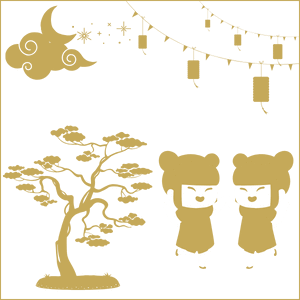
LANTERN FESTIVAL
(3rd March 2026)

QINGMING FESTIVAL
(4th April 2025)

DRAGON BOAT FESTIVAL
(31st May 2025)
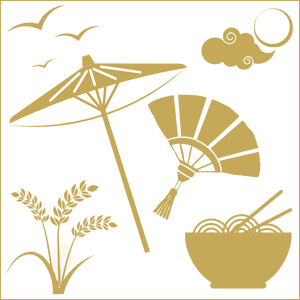
SUMMER SOLSTICS
(21st June 2025)
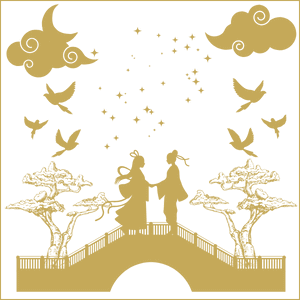
CHINESE VALENTINE'S DAY
(29th August 2025)
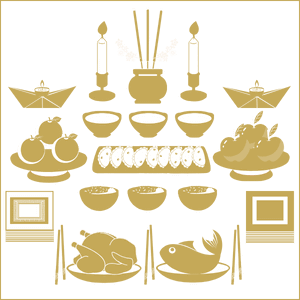
HUNGRY GHOST FESTIVAL
(6th September 2025)

MID-AUTUMN FESTIVAL
(6th October 2025)

CHINA'S NATIONAL DAY
(1st October 2025)

CHONGYANG FESTIVAL
(29th October 2025)
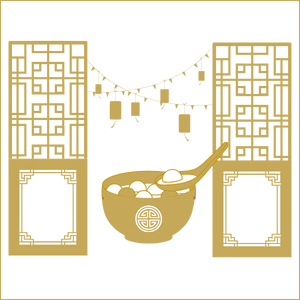
WINTER SOLSTICE
(21st December 2025)
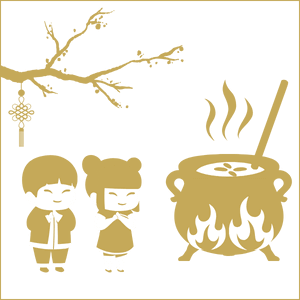
LABA FESTIVAL
(26th January 2026)
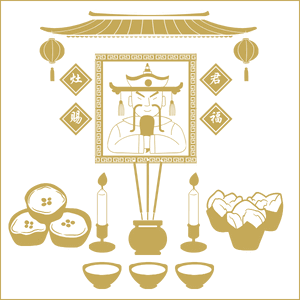
KITCHEN GOD FESTIVAL
(11th February 2026)
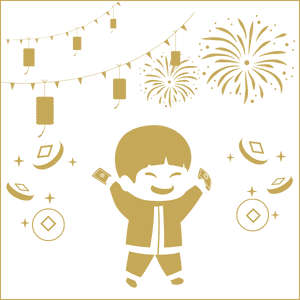
CHINESE NEW YEAR EVE
(16th February 2026)
CHINESE NEW YEAR
(nong lik san nin)
Chinese New Year, also known as the Spring Festival or Lunar New Year, is the most significant of Chinese festivals, marking the start of the new year on the traditional Chinese calendar. Rooted in mythology, the legend of Nian tells of a fierce monster that terrorizes villages every New Year’s Eve. Villagers once fled to the mountains, but an old man drove Nian away with red paper, firecrackers, and candles. These practices evolved into traditions, making red-colored decorations and firecrackers central to the celebrations. Chinese New Year traditions symbolize prosperity, happiness, wealth, and longevity. Key customs include cleaning homes to remove bad luck, decorating with red lanterns, couplets, and giving red envelopes (hung baau or lai see) with money to children and unmarried adults for good fortune.
The Chinese New Year, being one of the most important festivals in China, is often greeted with ‘gung hei faat choy,’ a phrase signifying good fortune and prosperity in the coming year. Visiting relatives, especially the eldest family members, is also common practice. Lion and dragon dances, along with firecrackers, add to the festive atmosphere. Food plays a crucial role, with each dish carrying symbolic meanings during Chinese festivals. While, dumplings, resembling ancient money ingots, symbolize wealth. Fish, which sounds like the word surplus in Mandarin, represents abundance and is served whole at the table for unity. Spring rolls, with their golden color, signify wealth and prosperity. Oranges and tangerines, with their round shape and color, represent fullness and wealth, and their names sound like “success” and “good luck.”
1
Fish symbolizes abundance, ensuring wealth and resources for the year. Serving a whole fish represents unity and completeness, essential for family reunions in the new year.
2
Spring rolls symbolize wealth and prosperity. Their golden color resembles gold bars, representing good fortune for the coming year. They also signify the arrival of spring and renewal.
3
Fish symbolizes abundance, ensuring wealth and resources for the year. Serving a whole fish represents unity and completeness, essential for family reunions in the new year.
4
Fish symbolizes abundance, ensuring wealth and resources for the year. Serving a whole fish represents unity and completeness, essential for family reunions in the new year.
LANTERN FESTIVAL
(jyun siu zit)
The Lantern Festival, a prominent event in Chinese festivals, marks the final day of the Chinese New Year celebrations. Featuring vibrant lantern displays and various folk activities, this festival dates back over 2,000 years and is rich with legends. One tale involves the Jade Emperor, who planned to destroy a town for killing his favorite crane. The townspeople, who were warned by the Emperor’s daughter, lit lanterns and set off fireworks to make him believe the town was already burning. Another legend, rooted in Taoism, honors the birthday of Tianguan, the god of good fortune, by lighting lanterns to seek his blessings. The festival also includes traditional lion dances and performances that add to the lively atmosphere, celebrating the end of the New Year festivities with grandeur.
Across various festivals in China, food is a significant element, with specific dishes often holding symbolic significance. Tangyuan (southern China) and Yuanxiao (northern China), sweet or savory glutinous rice balls, symbolize family unity with their round shape. Served in sweet soup and filled with ingredients like sesame paste or red bean paste, they enhance the festive spirit. Dumplings, also enjoyed during the Lantern Festival, are linked with Chinese New Year dinners and symbolize prosperity. These dishes add flavor and joy to the celebration. The festival’s culinary delights not only bring families together but also reflect the rich cultural traditions and the importance of shared meals. Each dish eaten during this festival serves as a delicious reminder of the year’s hopes and blessings.
1
Tangyuan symbolizes family unity and togetherness. Its round shape represents completeness and reunion, signifying harmony and the hope for a happy, prosperous family life.
2
The unique shape of wontons is similar to ancient Chinese ingots, which were symbols of wealth. Eating them during the Lantern Festival is believed to bring good fortune.
3
Fish symbolizes abundance, ensuring wealth and resources for the year. Serving a whole fish represents unity and completeness, essential for family reunions in the new year.
4
Fish symbolizes abundance, ensuring wealth and resources for the year. Serving a whole fish represents unity and completeness, essential for family reunions in the new year.
QINGMING FESTIVAL
(cing ming zit)
Qingming Festival, also commonly known as Tomb-Sweeping Day, is a significant Chinese festival where people honor their ancestors by tending to their graves, cleaning tombstones, and making offerings. Originating from the Cold Food Festival, it gradually shifted its focus to tomb-sweeping and ancestor veneration. Legend says the festival honors Jie Zitui, a loyal servant who died in a fire that Duke Wen started to make him come back. In Jie’s memory, Duke Wen decreed that no fires be lit on this day, which evolved into the Qingming Festival. An important occasion in Chinese culture, the Qingming Festival involves solemn practices like cleaning graves, offering prayers, and preparing food. This festival highlights respect for heritage and the lasting significance of honoring ancestors.
During these Chinese festivals in China, families visit the graves of their ancestors to honor their memory and make offerings of food, incense, and paper money. Kite flying is a popular activity, symbolizing the sending of blessings to the ancestors in heaven. Many also embrace the spring weather with outdoor activities like hiking and picnics, connecting with nature while honoring their heritage. Traditional foods play a significant role, such as Qingtuan—green rice balls made with glutinous rice and barley grass or mugwort, symbolizing spring’s arrival. Cold dishes, reflecting the Cold Food origins, feature meats, vegetables, and pickled items served chilled, adding a refreshing touch to these Chinese festivals. These practices highlight the blend of cultural reverence and joy that characterizes these festivals in China.
1
The egg symbolizes renewal and new beginnings, aligning with Qingming’s themes of honoring ancestors and spring’s arrival. The fresh ingredients represent spring and life’s renewal.
2
Qingtuan symbolizes spring and ancestor honor. Its green color, from mugwort or barley grass, represents new growth. Eaten during Qingming, it marks a time for families to pay respects.
3
Fish symbolizes abundance, ensuring wealth and resources for the year. Serving a whole fish represents unity and completeness, essential for family reunions in the new year.
4
Fish symbolizes abundance, ensuring wealth and resources for the year. Serving a whole fish represents unity and completeness, essential for family reunions in the new year.
DRAGON BOAT FESTIVAL
(tuen ng zit)
The Dragon Boat Festival, also known as the Duanwu Festival, is a significant festival which celebrated across China and by Chinese communities worldwide. Rooted in history and legend, it honors figures like Qu Yuan, a patriotic poet and minister who drowned himself in despair during ancient China’s Warring States period. Local fishermen raced to save him but were unable to reach him in time. To protect his body from fish, they tossed rice dumplings wrapped in bamboo leaves into the river as offerings. As a major event in Chinese festivals, the Dragon Boat Festival features dragon boat races on rivers, lakes, and seas, attracting both spectators and participants. Additionally, families come together to enjoy zongzi, exchange stories, and make perfume pouches to enhance the festive spirit.
Zongzi, the festival’s iconic dish, consists of pyramid-shaped dumplings made from glutinous rice wrapped in bamboo leaves and filled with ingredients like pork, shiitake mushrooms, salted eggs, dried shrimp, dates, or beans. Steamed or boiled to perfection, they offer a delightful mix of stickiness and flavor. Alongside zongzi, salted duck eggs add a savory touch, complementing the festive meal and symbolizing the celebration’s cultural significance. These traditional foods, along with activities and customs, highlight the Dragon Boat Festival’s role in celebrating community and cultural pride during this important festival in China. The vibrant dragon boat races and the crafting of colorful perfume pouches further enhance the sense of togetherness and heritage, making it a standout among Chinese festivals.
1
Zongzi is sticky rice dumplings wrapped in bamboo leaves. It symbolizes remembrance and honor, representing respect for Qu Yuan’s sacrifice and fostering unity among people
2
Sesame balls, symbolize completeness and unity. Legend says that the rain before this festival is caused by holes in the sky. Eating Jiandui, is said to plug these holes and stop the rain.
3
Fish symbolizes abundance, ensuring wealth and resources for the year. Serving a whole fish represents unity and completeness, essential for family reunions in the new year.
4
Fish symbolizes abundance, ensuring wealth and resources for the year. Serving a whole fish represents unity and completeness, essential for family reunions in the new year.
SUMMER SOLSTICE
(haa zi)
The Summer Solstice Festival, a key event among Chinese festivals, celebrates the longest day of the year and the arrival of summer. Rooted in ancient agricultural traditions, it highlights the peak of summer and the sun’s power. The festival reflects Chinese culture’s deep respect for nature and the sun’s crucial role in crop growth. Communities gather to honor nature’s abundance with various customs. People hang bundles of mugwort and calamus to ward off evil spirits and diseases, crediting protective qualities to these herbs. In Wuxi, parents weigh their children to symbolize their growth and well-being over the past year, while Hani people perform ceremonies to mark the sun’s southward movement. As one of the many vibrant festivals in China, it shows the cultural importance and communal spirit of the season.
Food plays an important role in these Chinese festivals, featuring dishes that celebrate the season’s freshness. People enjoy summer fruits such as watermelon, strawberries, and lychees, valued for their cooling effects. Cold noodle dishes, such as sesame noodles and mixed vegetable noodles, are also popular, providing relief from the summer heat and highlighting the autumnal seasonal produce. These traditional foods enhance the festive atmosphere, further reflecting the festival’s celebration of summer’s vitality and abundance. In addition to these dishes, many communities also prepare and share special treats like chilled soups or herbal teas, further embracing the season’s offerings. The emphasis on seasonal ingredients exhibits the importance of enjoying nature’s bounty while bringing people together.
1
Cold noodles are refreshing and cooling, ideal for the onset of hot summer months. Consuming yin foods like cold noodles helps balance the body’s internal energy and maintain health.
2
Bitter melon is valued for its cooling properties, believed to reduce body heat and detoxify. Its bitter taste symbolizes endurance, reflecting cultural values of perseverance.
3
Fish symbolizes abundance, ensuring wealth and resources for the year. Serving a whole fish represents unity and completeness, essential for family reunions in the new year.
4
Fish symbolizes abundance, ensuring wealth and resources for the year. Serving a whole fish represents unity and completeness, essential for family reunions in the new year.
CHINESE VALENTINE'S DAY
(cing jan zit)
Chinese Valentine’s Day, also known as Qixi Festival or Double Seventh Festival, is a cherished event among Chinese festivals. Rooted in the romantic legend of Zhinü and Niulang, the tale tells of Zhinü, a heavenly weaver, who falls in love with Niulang, a mortal cowherd. The Jade Emperor, ruler of heaven, forbids their love and separates them with the Milky Way. Touched by their love, the Jade Emperor lets them meet once a year on the seventh day of the seventh lunar month, when a bridge of magpies appears over the Milky Way. It celebrates their annual reunion, symbolizing enduring love and the belief that true love can overcome all obstacles. It is a time for couples to cherish each other and express their love making it a standout among Chinese festivals and a highlight of festivals in China.
During the festival, people worship Zhinü and Niulang, offering fruits like melons and praying for skills and happiness. Young women often pray for sewing and embroidery skills to attract a good husband, while couples wish for joy, love and longevity. Celebrations include exchanging gifts, dating, and writing love letters. In some regions, people stargaze to view Vega (Zhinü) and Altair (Niulang) in the night sky. Cities host events like lantern shows, folk performances, and matchmaking events. Traditional foods for this festival include Qi Qiao Jie pastries shaped like romantic symbols, fruit platters symbolizing sweetness, Qiaoguo (fried pastries) with intricate designs, and red bean desserts. Noodles are also enjoyed, symbolizing longevity. These customs highlight the festival’s role in celebrating love and heritage.
1
Qixi pastries symbolize love and happiness, passed down through generations to honor the cowherd and weaver girl’s devotion. Sometimes they are hung as decorations on a red cord.
2
Sesame balls (Jiandui), symbolize completeness and unity. Legend says that the rain before this festival
3
Fish symbolizes abundance, ensuring wealth and resources for the year. Serving a whole fish represents unity and completeness, essential for family reunions in the new year.
4
Fish symbolizes abundance, ensuring wealth and resources for the year. Serving a whole fish represents unity and completeness, essential for family reunions in the new year.
HUNGRY GHOST FESTIVAL
(jyu laan zit)
The Hungry Ghost Festival, a very significant event among Chinese festivals, is rooted in traditional beliefs that during this time, the gates of hell open, allowing hungry ghosts to roam the world. Originating from ancient Buddhist and Taoist traditions, one popular story involves Mu Lian, a disciple of Buddha, seeking to rescue his mother from hell after she had unknowingly consumed meat soup, condemning her as a hungry ghost. Following Buddha’s guidance, Mu Lian offered prayers and food, easing his mother’s suffering. This festival in China is a profound expression of filial piety and respect for the deceased, observed with both solemnity and devotion. Celebrations often include communal activities and rituals that reflect deep cultural values and beliefs. It highlights honoring ancestors and harmony with the spiritual world.
In the Hungry Ghost Festival in China, communities engage in various activities to celebrate this important event. Temporary altars adorned with incense and offerings show respect for the departed, while public feasts highlight the richness of traditional Chinese dishes. Temple ceremonies offer moments for spiritual reflection and blessings for souls. Foods served during the festival include fresh fruits like pineapples, oranges, apples, and bananas, as well as sticky rice cakes wrapped in bamboo leaves and sweet bean paste or lotus seed dumplings. Many people choose vegetarian meals to express compassion for all living beings, including spirits. These practices reinforce community ties and preserve cultural heritage through significant observances, making it a notable part of Chinese festivals.
1
The dumpling, filled with savory ingredients to honor and provide for the restless spirits believed to roam during this time, ensuring they are fed and their presence is respected.
2
Sesame balls (Jiandui), symbolize completeness and unity. Legend says that the rain before this festival is caused by holes in the sky.
3
Fish symbolizes abundance, ensuring wealth and resources for the year. Serving a whole fish represents unity and completeness, essential for family reunions in the new year.
4
Fish symbolizes abundance, ensuring wealth and resources for the year. Serving a whole fish represents unity and completeness, essential for family reunions in the new year.
MID-AUTUMN FESTIVAL
(zung cau zit)
The Mid-Autumn Festival, also known as the Mooncake Festival, is a prominent Chinese festival that traces its origins to ancient agrarian society, marking the end of the autumn harvest. A legend associated with the festival tells the story of Hou Yi, a skilled archer who saved the earth by shooting down nine of the ten suns, leaving one to provide light. In gratitude, he was given the elixir of immortality, which he entrusted to his wife, Chang’e. To protect herself, Chang’e consumed the elixir and ascended to the moon, becoming the Moon Goddess. Hence, during this festival in China, communities come together for viewing the moon, symbolizing reunion. Colorful lanterns light up the night, adding to the festive atmosphere. In some regions, the festival features dragon dances, lively music, and firecrackers, adding to the festivities.
Mooncakes, the iconic treat of the Mid-Autumn Festival, are round pastries filled with sweet or savory ingredients like red bean paste. These are exchanged as gifts among loved ones, symbolizing unity. In addition to mooncakes, people enjoy a variety of traditional foods during this festival in China, celebrating the abundance of autumn. Pomelos, with their round shape, mirror the full moon and are shared to reflect the harvest’s bounty. Taro root is favored for its association with good fortune and luck, while hairy crabs represent harmony and wealth. Additionally, lotus root, with its auspicious holes, symbolizes new beginnings and is used in dishes like stir-fries and pickles. These traditional foods contribute to the festive spirit of festivals in China, emphasizing the importance of family and cultural heritage during these special occasions.
1
Mooncakes, a round shaped pastry, represent completeness and reunion, and unity reflecting the full moon’s symbolism of togetherness and the celebration of familial bonds.
2
Sesame balls (Jiandui), symbolize completeness and unity. Legend says that the rain before this festival is caused by holes in the sky.
3
Fish symbolizes abundance, ensuring wealth and resources for the year. Serving a whole fish represents unity and completeness, essential for family reunions in the new year.
4
Fish symbolizes abundance, ensuring wealth and resources for the year. Serving a whole fish represents unity and completeness, essential for family reunions in the new year.
CHINA'S NATIONAL DAY
(gwok hing zit)
China’s National Day, also known as National Day Golden Week, celebrates the founding of the People’s Republic of China in 1949. This significant Chinese festival commemorates Mao Zedong’s announcement on October 1st, 1949, marking the end of the Chinese Civil War. It’s a time for reflecting on the nation’s progress and showing patriotism. The celebration begins with a flag-raising ceremony in Beijing’s Tiananmen Square, attended by officials and the public. Major anniversaries may feature elaborate military parades showcasing China’s military strength. Throughout the week-long Golden Week holiday, various cultural performances, fireworks, and exhibitions are held nationwide, highlighting the festive spirit of Chinese festivals and fostering national pride and unity.
National Day celebrations involve festive meals with family and friends, featuring a variety of Chinese dishes reflecting diverse culinary traditions. Popular dishes include roast duck, symbolizing happiness and prosperity, and long noodles, representing longevity. Spring rolls signify wealth, while dumplings, symbolizing prosperity, are staple items. Additionally, mooncakes may also be served to symbolize unity, even though they are associated with other Chinese festivals. These foods enhance the festive atmosphere and celebrate the nation’s achievements and cultural heritage. Families gather for elaborate meals and toasting, reinforcing bonds and shared pride in the country’s progress. The rich flavors of these dishes mirror the nation’s journey and accomplishments, reflecting both cultural pride and historical progress.
1
Noodles symbolize longevity and prosperity, with their long, unbroken strands representing a long life and continued success, for celebrating the nation’s achievements.
2
Sesame balls (Jiandui), symbolize completeness and unity. Legend says that the rain before this festival is caused by holes in the sky.
3
Fish symbolizes abundance, ensuring wealth and resources for the year. Serving a whole fish represents unity and completeness, essential for family reunions in the new year.
4
Fish symbolizes abundance, ensuring wealth and resources for the year. Serving a whole fish represents unity and completeness, essential for family reunions in the new year.
CHONGYANG FESTIVAL
(chung yeung zit)
The Chongyang Festival, also known as the Double Ninth Festival, is a traditional Chinese festival with ancient origins that honors elders and ancestors while expressing gratitude for life and health. Rooted in the auspicious number nine, symbolizing longevity, the festival is also linked to the legend of Huan Jing, who, by climbing a mountain and avoiding a plague, was spared from disaster. This practice led to the tradition of mountain climbing during the festival. Celebrated as one of the key Chinese festivals, it builds community and resilience as people come together to celebrate life and overcome challenges. The festival highlights the importance of family bonds and the collective spirit in facing life’s trials. It also serves as a reminder to cherish our elders and appreciate the blessings of health and longevity.
During the Chongyang Festival, families enjoy outdoor activities, often hiking to scenic spots to enjoy the autumn foliage and have picnics. Climbing mountains or hills, is a common custom that symbolizes overcoming challenges and achieving personal growth, particularly for the elderly, and is thought to promote health and longevity. Another tradition involves carrying cornus (dogwood) branches, believed to ward off evil spirits and diseases. While there are no specific traditional foods tied to the festival, dishes like rice cakes, symbolizing prosperity are enjoyed along with autumn produce like chestnuts and sweet potatoes. Chrysanthemum wine, believed to boost vitality, is also enjoyed. These customs underscore the Chongyang Festival’s place in Chinese festivals, celebrating both well-being and cultural traditions.
1
Also known as Chongyang cake, it symbolizes good health and longevity. Made with ingredients like chrysanthemum and dates, it is eaten to promote wellness and honor the elderly.
2
Sesame balls (Jiandui), symbolize completeness and unity. Legend says that the rain before this festival is caused by holes in the sky.
3
Fish symbolizes abundance, ensuring wealth and resources for the year. Serving a whole fish represents unity and completeness, essential for family reunions in the new year.
4
Fish symbolizes abundance, ensuring wealth and resources for the year. Serving a whole fish represents unity and completeness, essential for family reunions in the new year.
WINTER SOLSTICE
(dung zi)
The Winter Solstice Festival, also called the Dongzhi Festival, marks the year’s shortest day and longest night. With origins dating back to the Han Dynasty, this festival reflects the yin and yang philosophy in Chinese culture, symbolizing the transition from darkness to light and the return of longer days. According to legend, yin and yang masters taught people to make dumplings and tangyuan during the winter solstice to stay warm and nourished in the cold. Celebrated as one of the important Chinese festivals, it plays emphasizes the joy of family reunions and cultural heritage. This festival is considered a time for embracing traditions and finding warmth and comfort in shared family moments. The festive activities help to strengthen familial bonds and celebrate the enduring strength of cultural practices.
During the Winter Solstice Festival, families come together for meals and shared experiences, making dumplings a heartwarming tradition that represents unity. Other foods, like tangyuan, symbolize family togetherness. Additionally, people honor their ancestors with offerings of food and incense at gravesites. This festival also features cultural activities and events, showcasing the rich traditions of Chinese festivals through performances and exhibitions. Enjoying warming foods and beverages like hot soups, stews, steamed buns, and tea adds to the comfort of the celebrations. The Winter Solstice Festival is a moment to value family connections, celebrate and enjoy the lengthening of days with meaningful traditions, embodying the spirit of family and the promise of longer days.
1
This soup symbolizes warmth and nourishment during winter, with its ingredients providing hearty sustenance and adding a comforting touch during the coldest time of the year.
2
Sesame balls (Jiandui), symbolize completeness and unity. Legend says that the rain before this festival is caused by holes in the sky.
3
Fish symbolizes abundance, ensuring wealth and resources for the year. Serving a whole fish represents unity and completeness, essential for family reunions in the new year.
4
Fish symbolizes abundance, ensuring wealth and resources for the year. Serving a whole fish represents unity and completeness, essential for family reunions in the new year.
LABA FESTIVAL
(laat baat zit)
The Laba Festival, a simple traditional Chinese festival, marks the beginning of preparations for the Chinese New Year. It has roots in ancient agrarian society. It is a time for giving thanks for the harvest and making offerings to ancestors. This festival also holds great significance in Buddhism, celebrating the enlightenment of Siddhartha Gautama, who later became to be known as Buddha. As per the legend, after years of ascetic practices, Buddha regained his strength and achieved enlightenment after a shepherdess offered him a bowl of porridge. Additionally, this cherished festival fosters both spiritual reflection and community solidarity. As one of the notable Chinese festivals, the Laba Festival is marked by visits to Buddhist temples for ceremonies and prayers, and acts of charity, such as giving food to the less fortunate.
During the Laba Festival, a key tradition is preparing and sharing Laba porridge, which families make together and distribute to neighbors to foster community spirit. In some regions, communal pots of porridge are given to the public, especially to the poor and elderly. Schools and cultural institutions often hold events to teach children about the festival’s origin, history, and significance. Laba porridge, the festival’s iconic dish, includes ingredients like rice, millet, beans, nuts, dried fruits, and sometimes meat, symbolizing good fortune, health, and abundance. Additionally, in northern China, people pickle garlic in vinegar for use during the Chinese New Year, and Anhui Province offers Laba tofu, which is soaked in spiced brine and dried and can be enjoyed on its own or stir-fried. This festival blends tradition with communal generosity.
1
This hearty porridge, made with a mix of grains, nuts, and dried fruits, represents harvest, abundance, prosperity, and the nourishment needed to prepare for the new year.
2
Sesame balls (Jiandui), symbolize completeness and unity. Legend says that the rain before this festival is caused by holes in the sky. to plug these holes and stop the rain.
3
Fish symbolizes abundance, ensuring wealth and resources for the year. Serving a whole fish represents unity and completeness, essential for family reunions in the new year.
4
Fish symbolizes abundance, ensuring wealth and resources for the year. Serving a whole fish represents unity and completeness, essential for family reunions in the new year.
KITCHEN GOD FESTIVAL
(zai zou zit)
The Kitchen God Festival, also known as the Little New Year, is a key Chinese festival celebrated about a week before the Lunar New Year. Rooted in ancient Chinese folk religion and Taoism, it honors Zao Jun, known as the Kitchen God, who oversees household affairs. According to legend, Zao Jun was a mortal who became the Kitchen God after an act of penance. Each year, he ascends to the heavens to report on the household’s behavior to the Jade Emperor, influencing the family’s fortune for the upcoming year. In preparation for his departure, households are thoroughly cleaned to sweep away bad luck. A small altar with offerings of sweets, fruits, and incense is set up in the kitchen. This festival is an important part of the festivals in China, marking a fresh start for the year ahead.
The festival is concluded with burning of the effigy of the Kitchen God, symbolizing his departure to the heavens. During this festival in China, symbolic foods are offered to appease the Kitchen God and ensure a positive report to the Jade Emperor. Sticky rice cakes (Nian Gao) are used to sweeten the Kitchen God’s mouth, while candied dates, lotus seeds, and other sweet fruits serve a similar purpose. In some northern regions, barley candy is melted to “smear” the kitchen God’s lips. Fresh fruits like oranges, tangerines, and apples symbolize abundance and prosperity. While these offerings are common, regional variations exist, showcasing the diverse traditions of Chinese festivals. These traditions reflect both reverence for the Kitchen God and the cultural diversity of regional practices.
1
The smooth and delicate dessert is offered to the kitchen God as a way to ensure a favorable report and a positive year ahead, reflecting the wish for a happy and prosperous home.
2
Sesame balls (Jiandui), symbolize completeness and unity. Legend says that the rain before this festival is caused by holes in the sky.
3
Fish symbolizes abundance, ensuring wealth and resources for the year. Serving a whole fish represents unity and completeness, essential for family reunions in the new year.
4
Fish symbolizes abundance, ensuring wealth and resources for the year. Serving a whole fish represents unity and completeness, essential for family reunions in the new year.
CHINESE NEW YEAR EVE
(nin saa maan)
Chinese New Year’s Eve, or Lunar New Year’s Eve, is a major celebration in the Chinese calendar, marking the transition from the old year to the new. According to legend, the mythical creature Nian once terrorized villages until it was driven away by loud noises, fire, and the color red—customs that evolved into today’s traditions of red decorations and firecrackers. As one of the significant Chinese festivals, families come together to celebrate the new year, strengthening bonds and welcoming fresh beginnings. Homes are cleaned to remove bad luck and make way for good fortune. Red couplets, lanterns, and paper cutouts adorn homes, symbolizing happiness and longevity. Families also make offerings at altars or graves and visit temples for blessings, embracing the festive spirit of Chinese festivals.
The highlight of the evening is the “Reunion Dinner,” where family members gather to welcome the new year together. Elders distribute red envelopes filled with money (hung baau or lai see) to children, symbolizing luck. Popular festival foods include dumplings, which symbolize wealth and prosperity due to their resemblance to ancient Chinese gold ingots, especially favored in northern China. Whole fish is served for prosperity, as its name sounds like “surplus” in Chinese. Spring rolls represent wealth, filled with vegetables or meat. Longevity noodles signify a long, healthy life, while eight treasure rice, a sweet dish made with eight ingredients, symbolizes good fortune. This festival in China is celebrated with rich traditions that honor the past while welcoming the future.
1
The word for prawns in Chinese, “haa,” sounds like “laughter,” making them a festive choice to invite joy prosperity, and an abundance of good cheer into the coming year.
2
Sesame balls (Jiandui), symbolize completeness and unity. Legend says that the rain before this festival is caused by holes in the sky.
3
Fish symbolizes abundance, ensuring wealth and resources for the year. Serving a whole fish represents unity and completeness, essential for family reunions in the new year.
4
Fish symbolizes abundance, ensuring wealth and resources for the year. Serving a whole fish represents unity and completeness, essential for family reunions in the new year.
Immersing yourself in the essence of China’s festivals means participating in the vibrant celebrations, enjoying delectable festive food, and experiencing the cultural thrill up close. It’s not just about reading stories of these spectacular events—it’s about living them. Feel the rhythm of traditional music and the buzz of local crowds as you immerse yourself in the festivities. Why settle for just hearing about it when you can engage yourself in the festivities? To help turn this vision into reality, we’ve curated a list of trusted websites specializing in festival tours across China. These platforms offer detailed itineraries and expert guidance, making it easier to find and book immersive festival experiences. Browse through these resources to find well-organized tour packages that bring you right into the celebration. And we certainly don’t want you to miss out on the genuine excitement—so browse through these sites, be sure to verify their credibility, and get ready to experience Chinese festivals firsthand like never before!
About this provider?
Renowned for its comprehensive travel resources, China Highlights is a reputable tour provider specializing in tailor-made travel experiences. With over two decades of industry experience, they are known for reliability. Their tours cover major festivals in China, offering well-curated itineraries backed by customer reviews. With local insights and expertise, they help you experience the true essence of Chinese festivals.
About this provider?
Focused on authentic cultural experiences, China Culture Tour offers specialized China tours that highlight the local traditions and festivals across China. Their itineraries provide deep insights into China’s rich heritage, with opportunities for travelers to actively engage with local customs and celebrations. Well, this ensures an enriching journey, allowing you to truly appreciate Chinese festivals and culture.
About this provider?
A well-regarded tour provider, Top China Travel is known for its reliable and structured tours. They offer comprehensive guides to China’s most famous festivals, including travel information, tour highlights, and cultural significance of each celebration. Their tour packages are designed to provide an authentic experience, allowing you to immerse yourself in China’s rich and dynamic culture up close.
